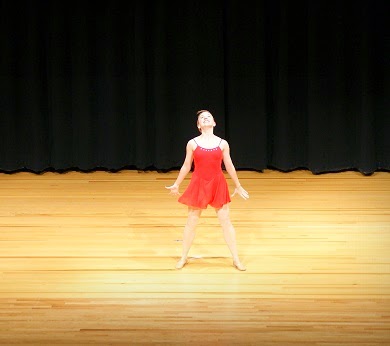| Attention World: These are called "pointe shoes." |
That Awkward Moment
They offer their commentary on "So You Think You Can Dance" and talk about how they took ballet when they were five and actually had a lot of talent but stopped for whatever reason. If you are talking to the creepy old man type, he'll probably make an awkward comment about dancers and flexibility and leotards.
Your conversation partner obviously knows nothing about dance and you don't want to seem rude by correcting him or her when he or she uses phrases like "toe shoes", "spins" and "high kicks". Usually, you just smile politely and feel awkward until you get the chance to escape.
Dance On the Radar
With the prominence of dance in pop culture lately thanks to dance based reality shows and last year's infamous Natalie Portman movie, regular people are becoming more aware of--and interested in--dance. I think this is a great thing. Ballet and modern dance especially have been on pedestals for far too long. I firmly believe that art can be valuable, ethereal and meaningful without being an out-of-reach commodity reserved for echelons of mink-wearing patrons with fat wallets.
Kate Ward's recently wrote a piece for Entertainment Weekly designed to help the average person understand what judges look for on So You Think You Can Dance. I'm less than enthusiastic about the show overall and enjoyed her subtle snark on the show--like her observations about typical, revealing SYTYCD attire*. I also liked Ward's atempt to help "normies" (non-dancers) distinguish solid technique from tricks.
The Mighty Pirouette
A few components of this article got me thinking about how difficult it can be to explain the nuances of dance technique, dance culture and different dance styles to people totally unfamiliar with the world. Ward placed double pirouettes in the same category as back flips--"tricks." She followed up by explaining that pirouettes are "easier than they look." My first reaction was annoyance. Pirouettes are a dancer's bread and butter. Intermediate and advanced dancers should be able to land a clean double pirouette to both sides. I wouldn't classify it as a "trick" for dancers the same way a back handspring is.
That said, pirouettes--like everything in ballet--are actually more complicated than they look. First there's the preparation. Is your weight distributed just right? Are you sitting too long in the plié--or worse, barely taking a plié at all? Now we go up to relevé. Are you pushing off of your back foot at the right moment. Hitting the passé position as quickly as possible. Is your supporting leg pulled up and turned out? Is your passé leg in the right place, high on your supporting leg, equally turned out and finished in a supporting foot? We haven't even started to turn yet, or discussed what your arms should be doing. It's one of the most difficult things to teach beginning dancers simply because of all the little components that have to be in place for your turn to work. Many of these things happen automatically after five or ten or twenty years of pirouetting, but every dancer is a work in progress. You're never finished learning how to pirouette.
Instead of being impressed by multiple pirouettes, Ward says, audiences should look for dancers who can raise their legs high over their heads. Strong extensions require solid technique and training, for sure, but plenty of poor dancers can kick their face or developpe their leg to their ear "effortlessly" and do it poorly. I guess what's getting lost here in this piece is that it's not what a dancer does but how they do it that sets them apart. That's what's difficult to explain to a non-dancer and that's what rubbed me the wrong way about the execution of this piece, as much as I appreciated the objective
Have you ever had a frustrating dance discussion with a non-dancer? What are your thoughts on SYTYCD and dance in pop culture?
*My bitterness about barelegged flimsy top trend probably has a lot to do with the fact that I'm unbearably self-conscious about my thighs. Some of us still prefer wearing tights on stage, thanks.
